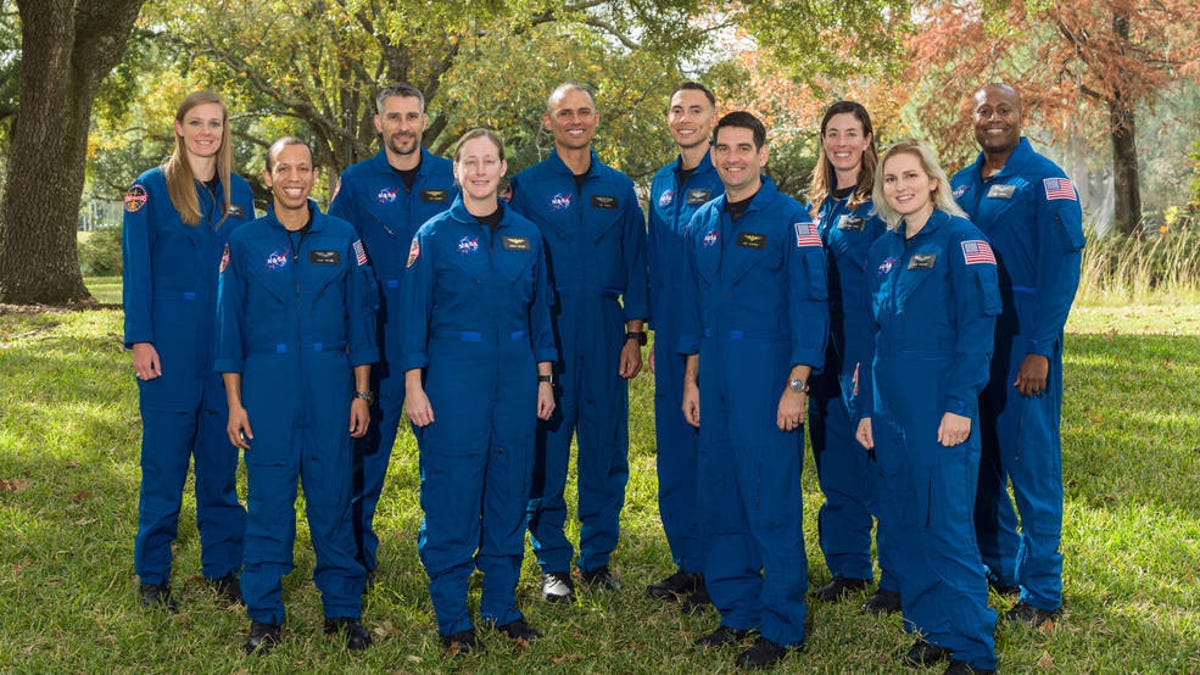NASA introduces 10 future astronauts chosen from 12,000 applicants
NASA's new astronauts have their hearts set on visiting the moon.
Test pilots. Engineers. Physicists. A US National Team cyclist. A SpaceX flight surgeon. NASA announced its 2021 class of 10 future astronauts on Monday, and they're a diverse group of high achievers. NASA calls them the "Artemis generation" because they're likely to be heavily involved in future Artemis-program missions to the moon.
"The women and men selected for the new astronaut class represent the diversity of America and the career paths that can lead to a place in America's astronaut corps," the space agency said in a statement.
NASA's candidates, the first ones since 2017, were chosen out of a pool of over 12,000 applicants and received their official introductions during an event near the Johnson Space Center in Houston. You can watch the replay here:
The candidates will kick off two years of intensive training in January. They will learn how to operate equipment for the International Space Station, prepare for spacewalks, advance their robotic skills, learn or improve their Russian language and operate a training jet. The reward for all that work could be trips not just to orbit, but possibly all the way to the moon.
Meet the astronaut candidates
Nichole Ayers is a major in the US Air Force and a combat aviator with experience in the F-22 fighter jet. "Ayers led the first ever all-woman formation of the aircraft in combat," NASA said.
Marcos Berrios, also a major in the US Air Force, is from Puerto Rico. Berrios is a test pilot and aerospace engineer.
Christina Birch has a doctorate in biological engineering from MIT and is a track cyclist on the US National Team.
Deniz Burnham is a lieutenant in the US Navy and a former intern at NASA's Ames Research Center in California. Burnham has a background in mechanical engineering and experience as a drilling-projects manager.
This patriotic view shows an American flag with the SLS rocket at NASA's Kennedy Space Center. SLS will power the Artemis moon missions.
Luke Delaney is a retired major in the Marine Corps with experience as a naval aviator and test pilot. Delaney is familiar with NASA after having worked as a research pilot at the agency's Langley Research Center.
Andre Douglas has a collection of engineering degrees from multiple universities. "Douglas served in the US Coast Guard as a naval architect, salvage engineer, damage control assistant, and officer of the deck," NASA said.
Jack Hathaway, a Navy commander, is a distinguished aviator with "more than 2,500 flight hours in 30 types of aircraft."
Anil Menon also has an Air Force background and was SpaceX's first flight surgeon. "Menon is an actively practicing emergency medicine physician with fellowship training in wilderness and aerospace medicine," NASA said.
Christopher Williams is a medical physicist and researcher studying image guidance techniques for cancer treatments.
Jessica Wittner, a lieutenant commander in the Navy, spent her military career as an aviator and test pilot.
Most of the candidates are in their 30s. Delaney and Menon are in their 40s. NASA has stringent requirements for its future astronauts. They must be US citizens, pass a rigorous, long-duration flight astronaut physical, and hold a master's degree in a science , technology, engineering or math field, along with at least three years of related experience.
Each candidate spoke briefly during the event. Many of them talked about people who inspired them, the excitement of space exploration and the importance of teamwork. Berrios took a different route. He said he would like NASA to scale up the Ingenuity Mars helicopter to carry people, though that's probably a pipe dream.
NASA is hoping to launch its first uncrewed Artemis I test mission next year. Berrios may not get to fly a helicopter on Mars, but he might touch his boots down on the moon one day.


